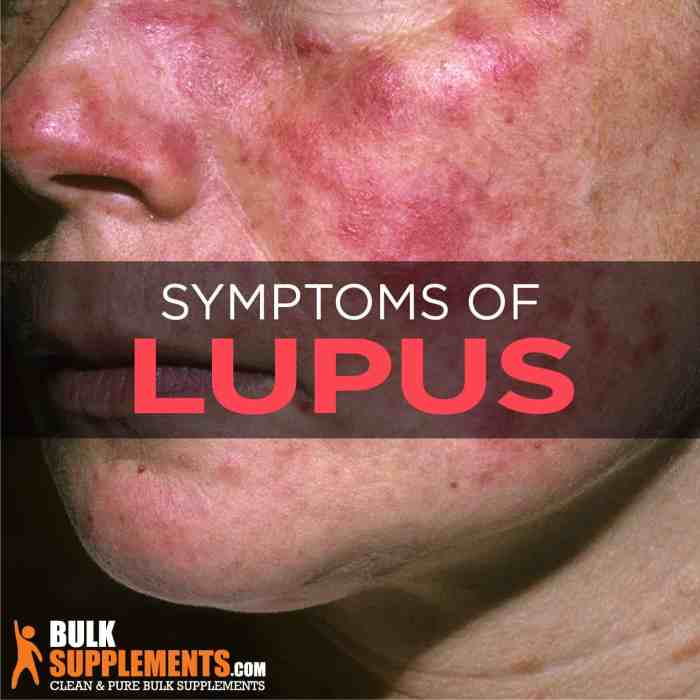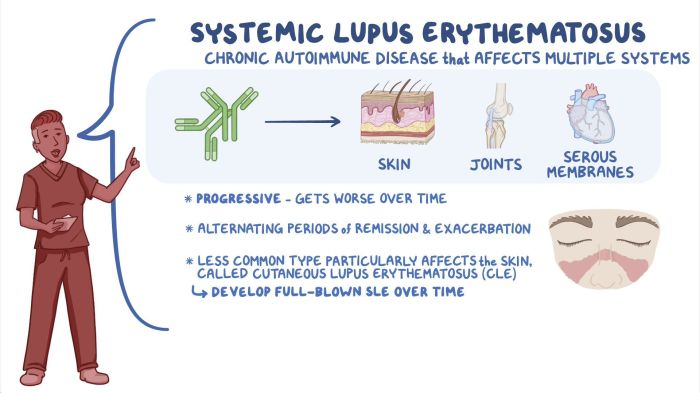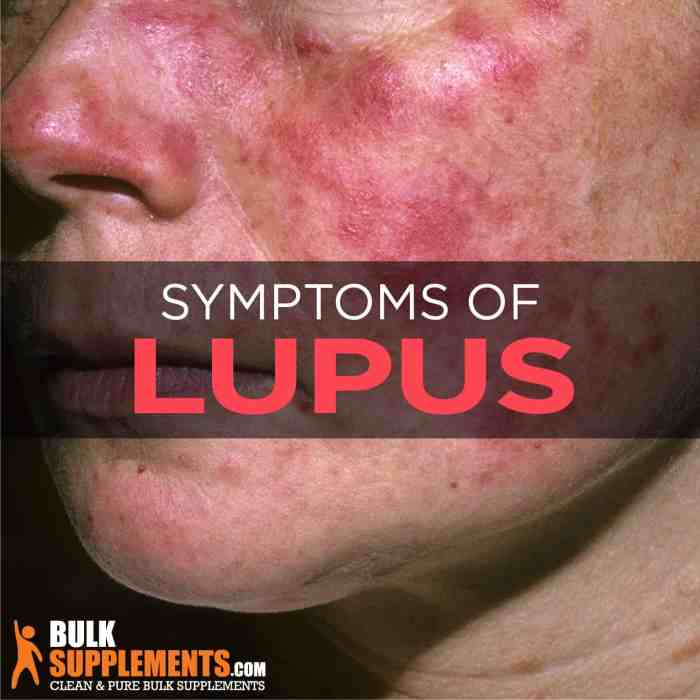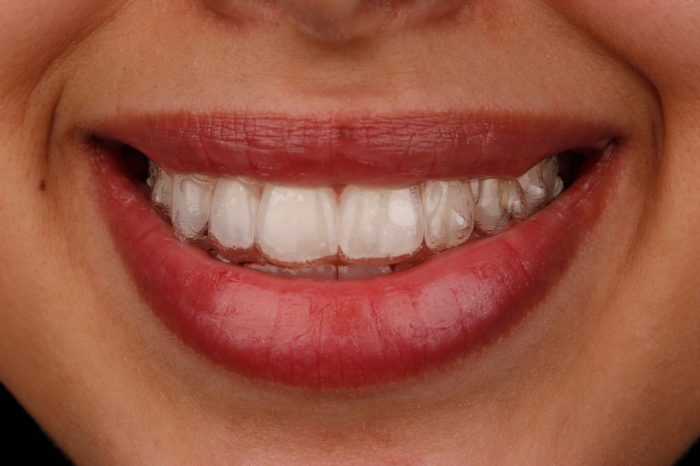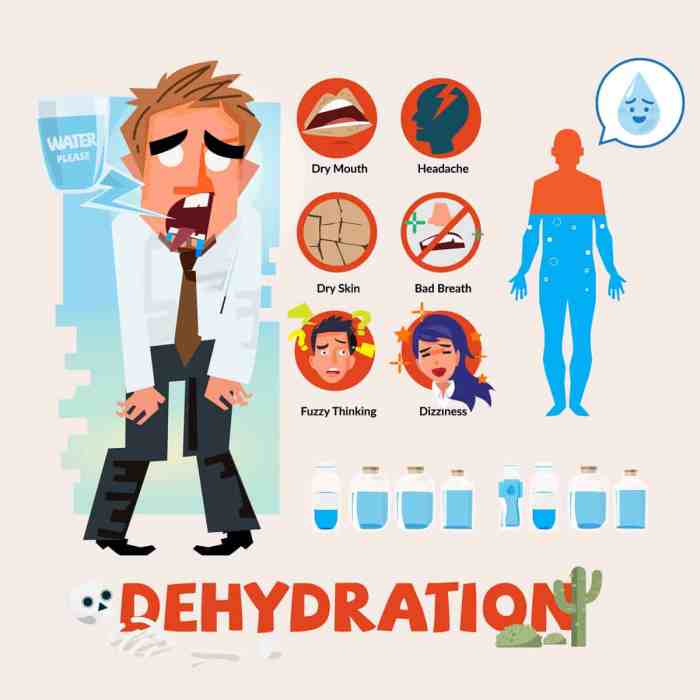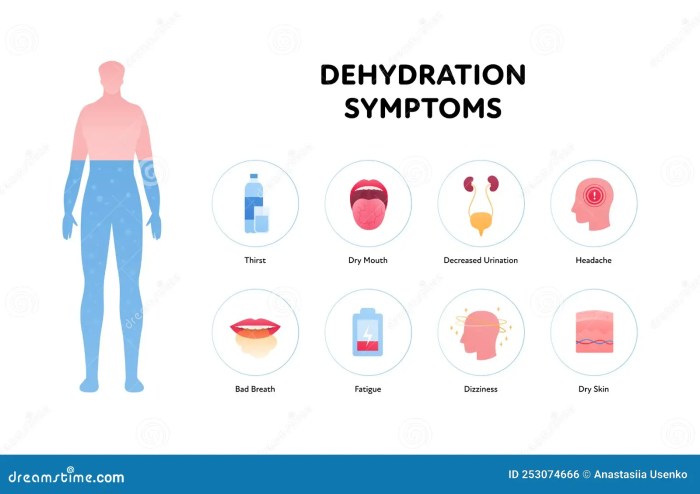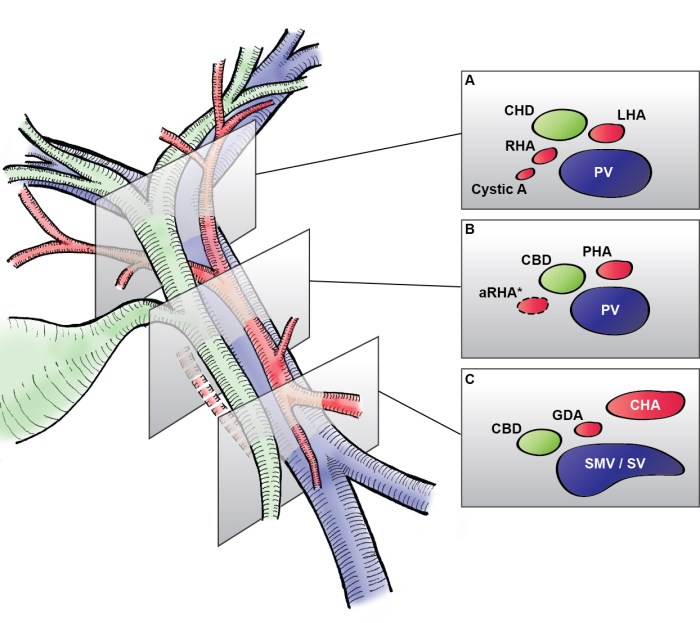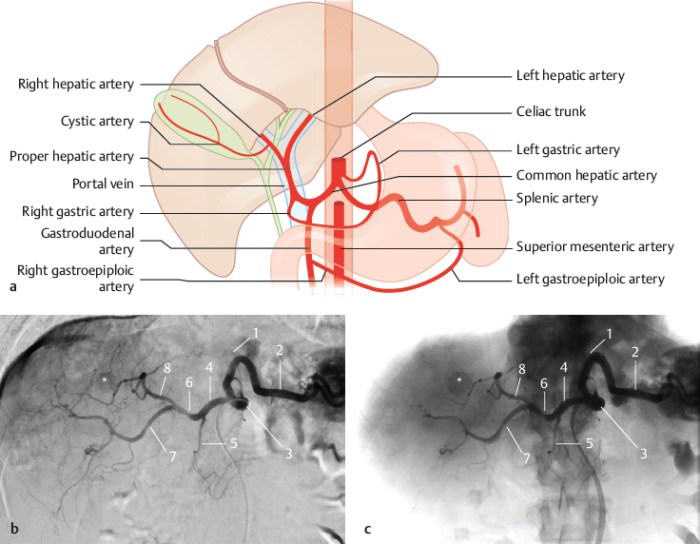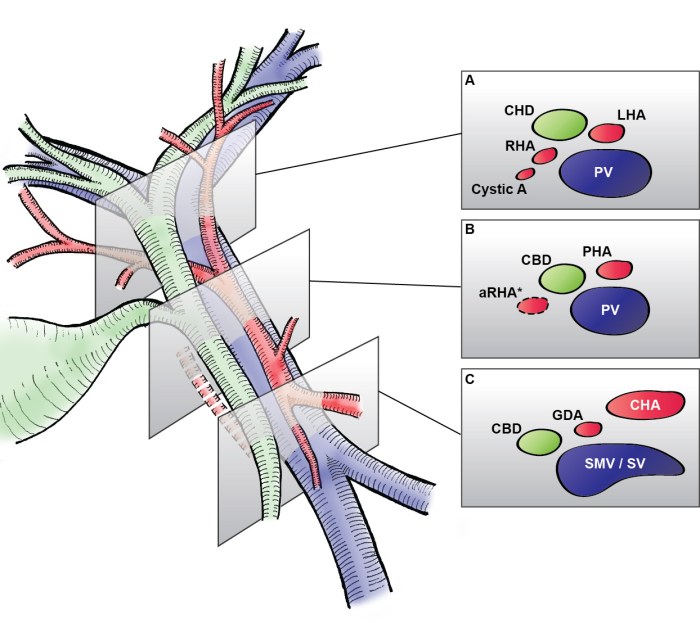Herbs for an enlarged prostate offer a potential natural approach to managing symptoms. Benign prostatic hyperplasia (BPH) is a common condition affecting men as they age, often leading to uncomfortable urinary issues. While conventional treatments exist, many explore herbal remedies as a complementary or alternative option. This guide delves into the world of herbal remedies, exploring potential benefits, risks, and scientific evidence.
We’ll examine popular herbs, their mechanisms of action, and safe preparation methods, all while highlighting the crucial importance of consulting a healthcare professional before using any herbal remedies.
This exploration will cover the spectrum of potential benefits and risks associated with various herbs. We’ll analyze the scientific evidence behind their use and address potential interactions with other medications. We’ll also provide valuable insights into lifestyle recommendations and safe herbal preparation methods, ultimately empowering you to make informed decisions about your health.
Introduction to Enlarged Prostate
Benign prostatic hyperplasia (BPH) is a non-cancerous enlargement of the prostate gland, a walnut-sized gland located below the bladder. As men age, the prostate often grows larger, leading to a variety of urinary symptoms. This growth, while not cancerous, can significantly impact a man’s quality of life.The common symptoms of an enlarged prostate can vary in severity. Frequent urination, especially at night, is a hallmark symptom.
Difficulty starting or stopping the flow of urine, a weak urine stream, and a feeling of incomplete bladder emptying are also frequent complaints. These symptoms can significantly disrupt daily routines and sleep patterns, impacting overall well-being.Conventional medical treatments for BPH often focus on relieving symptoms and slowing the progression of the enlarged prostate. Pharmaceutical medications, such as alpha-blockers and 5-alpha-reductase inhibitors, are frequently prescribed.
Surgical procedures, like transurethral resection of the prostate (TURP), are considered for more severe cases. These treatments, while often effective, can have potential side effects and may not be suitable for all patients.Herbal remedies are sometimes explored as an alternative or complementary approach to managing BPH symptoms. Many herbs are believed to have properties that can help reduce inflammation and improve urinary function.
However, it’s crucial to remember that herbal remedies are not regulated in the same way as pharmaceuticals, and their efficacy and safety are not always well-established.
Herbal Remedies for Enlarged Prostate
A variety of herbal remedies are used to alleviate symptoms associated with an enlarged prostate. Their use often stems from traditional medicine practices, but scientific evidence supporting their efficacy can be limited. It’s essential to consult with a healthcare professional before incorporating any herbal remedy into your treatment plan.
| Herb Name | Potential Benefits | Possible Side Effects | Scientific Evidence (brief summary) |
|---|---|---|---|
| Saw Palmetto | Potentially reduces inflammation, improves urine flow, and reduces urinary frequency. | May cause mild gastrointestinal upset, headache, or skin rash in some individuals. | Some studies suggest a potential benefit in improving urinary symptoms, but more robust, high-quality research is needed. |
| Pygeum Africanum | May help reduce inflammation and improve urinary function. | May cause mild digestive issues, including nausea or diarrhea. | Limited research, with some studies showing modest improvements in urinary symptoms. |
| Nettle Leaf | Contains diuretic properties, which may help with fluid retention and improve urine flow. | May cause mild stomach upset, or allergic reactions in some individuals. | Some studies suggest a potential diuretic effect, but more research is necessary to evaluate its impact on BPH. |
| Zinc | May help regulate prostate function and reduce inflammation. | Potential side effects include nausea, vomiting, and diarrhea at high doses. | Some studies suggest a link between zinc deficiency and prostate problems, but further research is needed to determine if supplementing zinc can improve BPH symptoms. |
Popular Herbs for Enlarged Prostate
Many men turn to natural remedies to manage the symptoms of benign prostatic hyperplasia (BPH). While herbs can offer potential support, it’s crucial to remember that they are not a substitute for conventional medical care. Always consult with your doctor before incorporating any herbal remedies into your treatment plan, especially if you are taking other medications. Herbal remedies can interact with medications, and some herbs may not be suitable for everyone.
Common Herbs for BPH
Herbal remedies for BPH have been used for centuries, but their effectiveness is often not supported by rigorous scientific studies. The potential benefits of these herbs are often anecdotal and need further investigation. Some herbs are believed to have properties that may help relax the muscles in the prostate, improving urine flow.
Five Herbs Commonly Used
- Saw Palmetto: This palm fruit extract is a popular herbal remedy for BPH. It’s believed to work by inhibiting 5-alpha-reductase, an enzyme that contributes to prostate growth. Saw palmetto can be consumed as a tea, capsule, or tincture. However, there are limited conclusive studies demonstrating effectiveness.
- Pygeum Africanum: Derived from the bark of the African pygeum tree, this herb is another common choice for BPH. It’s thought to reduce inflammation and swelling in the prostate, potentially improving urinary flow. Pygeum is typically available as a tincture or capsule.
- Nettle Root: This herb is known for its potential diuretic properties, which may help to reduce fluid retention. Diuretic effects may improve urination. Nettle root can be taken as a tea or in capsule form.
- Pumpkin Seeds: Rich in zinc, pumpkin seeds are often associated with prostate health. Zinc is essential for prostate function. Some people believe that the zinc in pumpkin seeds may help reduce prostate inflammation and improve urinary symptoms. Pumpkin seeds are commonly consumed as a snack or added to foods.
- Stinging Nettle: This herb is believed to have diuretic properties similar to nettle root, which might aid in reducing fluid retention and improving urinary flow. It’s often taken as a tea or in capsule form.
Potential Mechanisms of Action
- Saw Palmetto: Saw palmetto is believed to inhibit the enzyme 5-alpha-reductase, thereby reducing the conversion of testosterone to dihydrotestosterone (DHT), which may contribute to prostate growth.
- Pygeum Africanum: Studies suggest Pygeum Africanum may reduce inflammation and swelling in the prostate. The exact mechanism is not fully understood.
- Nettle Root: Nettle root is believed to have diuretic properties, increasing urine output. The exact impact on prostate health is not well established.
- Pumpkin Seeds: Zinc, a key nutrient in pumpkin seeds, may contribute to prostate health by potentially reducing inflammation.
- Stinging Nettle: Similar to nettle root, stinging nettle is thought to have diuretic properties that could potentially aid in urinary function.
Methods of Use
The various herbs are often consumed in different ways. These include teas, tinctures, capsules, or as a part of a meal. The appropriate dosage and method should be determined with the guidance of a healthcare professional.
Looking for natural remedies for an enlarged prostate? Many people explore herbal options, and while some herbs might offer relief, it’s crucial to remember that their effectiveness isn’t always scientifically proven. If you’re also curious about how much you’re burning while sweating, checking out this resource on does sweating burn calories might be interesting. Ultimately, always consult a healthcare professional for personalized advice on managing an enlarged prostate, as they can provide the best guidance based on your individual needs.
Comparison of Potential Benefits, Herbs for an enlarged prostate
| Herb | Potential Benefits | Potential Risks/Cautions |
|---|---|---|
| Saw Palmetto | May help reduce prostate growth and improve urinary symptoms. | May interact with blood thinners; consult a doctor. |
| Pygeum Africanum | May reduce inflammation and swelling in the prostate. | May interact with certain medications; consult a doctor. |
| Nettle Root | May have diuretic effects. | May cause digestive discomfort; consult a doctor. |
| Pumpkin Seeds | Rich in zinc, which may be beneficial for prostate health. | May interact with certain medications; consult a doctor. |
| Stinging Nettle | May have diuretic effects. | May cause allergic reactions in some individuals; consult a doctor. |
Potential Risks and Cautions
It is important to note that the safety and efficacy of herbal remedies for BPH are not always fully understood. Some herbs may interact with prescription medications, while others may cause adverse reactions in sensitive individuals. Always consult a doctor before starting any herbal remedy, particularly if you are taking other medications or have underlying health conditions. This information is for educational purposes only and should not be considered medical advice.
Scientific Evidence and Studies
Unfortunately, the scientific evidence supporting the effectiveness of herbal remedies for benign prostatic hyperplasia (BPH) is often limited and not always conclusive. Many studies investigating these remedies are small-scale, have methodological flaws, or lack rigorous controls, making it difficult to draw definitive conclusions about their efficacy. While some herbs show promise in animal models or preliminary human trials, further robust research is needed to confirm these findings and establish safe and effective dosages for human use.The current research often focuses on specific mechanisms of action, such as anti-inflammatory or antioxidant effects, rather than directly addressing the core symptoms of BPH.
Looking for natural remedies for an enlarged prostate? Certain herbs might help, but remember proper lifting techniques are crucial for overall health, especially if you’re experiencing prostate issues. Learning how to lift a person safely, like the tips on this helpful guide how to lift a person safely , is essential for preventing back and other injuries.
So, while herbs might be a part of your strategy, don’t forget to prioritize safe practices in all aspects of your health journey.
This makes it challenging to translate promising laboratory results into clinically relevant improvements for patients.
Types of Studies Conducted
A variety of research methods are used to investigate the effects of herbal remedies for BPH. Animal studies often involve exposing animals to specific herbs and observing changes in prostate size or function. These studies can provide insights into potential mechanisms of action but cannot directly translate to human outcomes. Clinical trials, where human subjects are involved, are essential to evaluate the safety and effectiveness of a treatment in a human population.
These trials typically involve comparing the effects of an herbal remedy to a placebo or standard medical treatment. The quality of clinical trials varies widely, and their findings should be interpreted cautiously.
Summary of Key Studies and Limitations
| Herbal Remedy | Type of Study | Key Findings | Limitations |
|---|---|---|---|
| Saw Palmetto | Several clinical trials | Some studies suggest potential benefits in reducing urinary symptoms and improving prostate size. | Variability in study design, sample sizes, and duration of treatment; inconsistent results across studies; potential for placebo effects. |
| Pygeum africanum | Clinical trials and animal studies | Some studies indicate potential for reducing urinary symptoms, although the evidence is not always consistent. | Similar limitations to saw palmetto studies, including inconsistent results and potential placebo effects. |
| Nettle | Limited clinical trials | Some preliminary evidence suggests potential for reducing urinary symptoms, but more research is needed. | Small sample sizes, lack of long-term follow-up, and potential for interactions with other medications. |
This table summarizes a small selection of herbal remedies studied for BPH. It’s crucial to recognize the limitations of each study, such as small sample sizes, variations in study design, and the potential for bias.
Reputable Sources for Further Research
- National Institutes of Health (NIH) databases, such as PubMed, offer access to a vast collection of scientific publications on BPH and herbal remedies.
- The Cochrane Library provides systematic reviews and meta-analyses of clinical trials, offering a comprehensive assessment of the evidence for various treatments.
- Reputable medical journals, such as the Journal of Urology and the American Journal of Medicine, publish research articles on a wide range of urological conditions, including BPH.
These resources provide valuable insights into the current understanding of BPH and herbal remedies, allowing for a more informed perspective on the topic.
Potential Biases in Research
It’s important to acknowledge that biases can influence research outcomes. Funding sources, the researchers’ prior beliefs, and the participants’ expectations can all introduce biases into studies. The lack of standardization in herbal preparations and dosages also makes it challenging to conduct reliable comparisons across different studies. When evaluating research on herbal remedies for BPH, it’s essential to critically assess the potential for bias and consider the overall quality of the study design.
Herbal Combinations and Interactions
Herbal remedies for benign prostatic hyperplasia (BPH) often involve combinations of herbs, aiming to synergistically enhance their effects. While promising, combining herbs can introduce potential interactions with other medications, both herbal and conventional. It’s crucial to approach herbal combinations with caution and always consult with a healthcare professional before starting any new regimen, especially if you’re taking other medications.Understanding these interactions is vital to maximize potential benefits while minimizing risks.
Herbal combinations can potentially amplify the effectiveness of individual herbs, but equally, they can also lead to unintended side effects or drug interactions. This section explores the nuances of combining herbs for BPH management, including potential interactions and the importance of professional guidance.
Potential Benefits of Herbal Combinations
Combining herbs can sometimes lead to a more potent effect than using individual herbs alone. This synergy may arise from the complementary actions of different plant compounds. For example, combining saw palmetto with other herbs like pygeum or stinging nettle might enhance their individual benefits in reducing inflammation and promoting urinary flow. However, this requires careful consideration and expert guidance.
Potential Interactions with Conventional Medications
Certain herbs can interact with prescription medications, potentially diminishing their effectiveness or causing adverse side effects. For example, some herbs may interfere with blood clotting or lower blood sugar levels, potentially impacting the effectiveness of medications prescribed for these conditions. Crucially, herbs can alter the way the body metabolizes other medications, which can lead to unexpected outcomes.
Importance of Professional Consultation
Before incorporating any herbal remedies, including combinations, into your treatment plan, it’s essential to consult with a healthcare professional. They can assess your individual health status, including any underlying conditions, and evaluate potential interactions with your existing medications. They can provide personalized recommendations and ensure that the herbal remedies are safe and appropriate for your situation.
Exploring herbal remedies for an enlarged prostate can be a fascinating journey, but it’s important to remember that these approaches should be considered alongside conventional medical care. While researching natural remedies, I stumbled upon some interesting ideas for home remedies for yeast infections, like using yogurt or apple cider vinegar. Ultimately, though, I’m focusing on finding the most effective and safe herbal options for prostate health, hoping to find a natural solution to support my overall well-being.
home remedies for yeast infections offer some unique approaches to explore.
Table of Potential Herb Combinations and Their Possible Effects
| Herb Combination | Potential Effects | Considerations |
|---|---|---|
| Saw Palmetto + Pygeum | Potentially enhanced anti-inflammatory and prostate-reducing effects. | May interact with blood thinners. Consult a doctor. |
| Nettle + Pumpkin Seed | May improve urinary symptoms by reducing inflammation and promoting prostate health. | May interact with certain diuretics. Consult a doctor. |
| Saw Palmetto + Stinging Nettle + Green Tea Extract | Potential for increased antioxidant support and prostate health improvement. | May interact with blood pressure medications. Consult a doctor. |
| Dandelion Root + Uva Ursi | Possible improvement in urinary function and detoxification. | May interact with medications affecting kidney function. Consult a doctor. |
Examples of Avoiding Harmful Interactions
To mitigate potential risks, carefully consider the following:
- Medication Compatibility: Always inform your doctor about any herbal remedies you are taking or considering. This allows them to assess potential interactions with your prescription medications.
- Dosage Adjustments: If you experience side effects, reduce the dosage or discontinue use of the herbal remedy. Your doctor can help you determine the appropriate dosage.
- Monitoring: Regular monitoring of your blood pressure, blood sugar, and other relevant health parameters is essential when using herbal remedies, especially when combined. Your doctor can advise on appropriate monitoring schedules.
- Consult Professionals: Seek guidance from a qualified healthcare professional to ensure the combination is safe for your specific needs. Herbal remedies should be part of a comprehensive treatment plan, not a substitute for professional medical advice.
Safety and Precautions
Using herbal remedies for an enlarged prostate (BPH) can be a tempting option, but it’s crucial to approach them with caution. While many herbs show promise in supporting prostate health, potential side effects and interactions with other medications or underlying conditions need careful consideration. Understanding the precautions associated with herbal use is essential for a safe and effective approach.Herbal remedies, while often touted as natural, can still have adverse effects.
The lack of rigorous regulation in the herbal supplement industry means that potency, purity, and consistency can vary significantly between products. This variability, combined with individual differences in metabolism and health conditions, can influence the impact of the herbs on your body. Proper dosage and frequency are critical to maximizing benefits and minimizing risks. Consulting with a healthcare professional is always the best course of action when considering herbal remedies for BPH.
Potential Side Effects
Herbal remedies for BPH can cause various side effects, ranging from mild discomfort to more serious reactions. These side effects can include allergic reactions (such as skin rashes, itching, or swelling), digestive issues (nausea, vomiting, diarrhea), headaches, dizziness, or changes in mood. Some herbs, if taken in high doses or for prolonged periods, might have more significant and long-term impacts on health.
Minimizing Risks and Side Effects
Several strategies can help minimize potential risks and side effects associated with herbal remedies. Always start with a low dose and gradually increase it as tolerated, according to your body’s response. Taking herbs with meals can help reduce stomach upset. Careful monitoring of your body’s reactions is paramount. If you experience any unusual symptoms, stop using the herbal remedy and consult your doctor immediately.
Dosage and Frequency
Appropriate dosage and frequency are crucial for the effectiveness and safety of herbal remedies. Each herb has specific recommendations for daily intake and duration of use. These recommendations are often dependent on the potency of the specific extract or preparation. Always follow the instructions provided by the manufacturer or a qualified healthcare professional. Do not exceed recommended doses or use herbs for longer than advised.
Contraindications
Certain herbs might interact negatively with existing medical conditions or medications. For instance, some herbs can interfere with blood clotting or blood pressure medications. Some herbs may also have contraindications for people with specific medical conditions, such as liver or kidney problems.
Safe Herbal Use Guidelines
Prioritize safety when using herbal remedies. Consult with a healthcare professional before starting any herbal treatment, especially if you have underlying health conditions or are taking other medications. Obtain herbs from reputable sources and ensure that the products are properly labeled and contain accurate information about the ingredients. Keep track of the herbs you are using and the doses you are taking.
Be honest with your healthcare provider about any herbal remedies you are using.
Important Considerations
It is crucial to remember that herbal remedies are not a substitute for conventional medical care. While some herbs may support prostate health, they are not intended to cure or treat medical conditions. If you have concerns about your prostate health, always consult a healthcare professional for proper diagnosis and treatment options.
Lifestyle Recommendations

Managing benign prostatic hyperplasia (BPH) effectively often involves more than just herbal remedies. A healthy lifestyle plays a crucial role in mitigating symptoms and improving overall well-being. A balanced approach that incorporates dietary changes, regular exercise, and stress management can significantly enhance your quality of life. This section delves into specific lifestyle strategies tailored to help manage BPH symptoms.
Importance of a Healthy Lifestyle
Adopting a healthy lifestyle is essential for managing BPH symptoms. A balanced diet and regular exercise can contribute to better blood flow, reducing inflammation, and supporting overall prostate health. By incorporating these healthy habits, you can experience symptom relief and a greater sense of control over the condition. Managing stress and getting adequate sleep further support a healthier body and mind.
Dietary Recommendations for BPH
A diet rich in fruits, vegetables, and whole grains is highly recommended for individuals with BPH. These foods are generally low in saturated fats and cholesterol, and rich in essential nutrients. Avoiding excessive consumption of processed foods, red meat, and sugary drinks is important. A diet that prioritizes whole, unprocessed foods will support better overall health and potentially contribute to symptom relief.
Sample Weekly Meal Plan
This sample meal plan provides a framework for incorporating BPH-friendly foods into your weekly diet. It’s crucial to adjust portion sizes and specific foods based on individual needs and preferences. Consult with a registered dietitian or healthcare professional for personalized dietary recommendations.
| Day | Breakfast | Lunch | Dinner |
|---|---|---|---|
| Monday | Oatmeal with berries and nuts | Salad with grilled chicken or fish | Baked salmon with roasted vegetables |
| Tuesday | Greek yogurt with fruit and granola | Lentil soup with whole-wheat bread | Lean beef stir-fry with brown rice |
| Wednesday | Whole-wheat toast with avocado and egg | Quinoa salad with chickpeas and cucumber | Chicken and vegetable skewers with quinoa |
| Thursday | Smoothie with spinach, banana, and almond milk | Turkey sandwich on whole-wheat bread with lettuce and tomato | Vegetarian chili with whole-wheat tortilla chips |
| Friday | Scrambled eggs with spinach and whole-wheat toast | Tuna salad sandwich on whole-wheat bread | Baked cod with steamed broccoli and brown rice |
| Saturday | Breakfast burrito with eggs, beans, and salsa | Leftovers from dinner | Homemade pizza with whole-wheat crust and vegetables |
| Sunday | Pancakes made with whole-wheat flour and fruit | Salad with grilled tofu and chickpeas | Chicken and vegetable curry with brown rice |
Exercises for Improved Blood Flow and Reduced Prostate Swelling
Regular exercise is crucial for improving blood circulation throughout the body, including the pelvic region. Exercises that focus on strengthening the pelvic floor muscles and promoting healthy blood flow are particularly beneficial.
- Kegel exercises: These exercises strengthen the muscles that support the bladder and prostate. They can be performed anywhere, anytime, and involve contracting and relaxing the pelvic floor muscles. Regular practice can improve urinary control and potentially reduce prostate swelling.
- Walking: A moderate-intensity activity like walking can significantly improve blood circulation and reduce inflammation. Aim for at least 30 minutes of brisk walking most days of the week.
- Swimming: This low-impact exercise is gentle on the joints and can improve cardiovascular health, contributing to overall well-being. Swimming promotes blood flow and reduces stress on the body.
- Yoga and Pilates: These practices combine physical postures, breathing techniques, and mindfulness. They can help improve flexibility, balance, and reduce stress, all of which can contribute to managing BPH symptoms.
Herbal Preparation Methods: Herbs For An Enlarged Prostate
Harnessing the power of herbs for an enlarged prostate often involves preparing them into usable remedies. Understanding the various methods and their nuances is crucial for ensuring efficacy and safety. This section delves into different preparation methods, providing detailed instructions and emphasizing the importance of proper storage.
Methods of Herbal Preparation
Different herbal preparations cater to varying needs and preferences. Each method has its own strengths and weaknesses regarding bioavailability, taste, and ease of use. Selecting the right method depends on the specific herb, desired outcome, and individual tolerance.
- Herbal Teas: Herbal teas are a common and accessible method of consuming herbs. They are generally well-tolerated and offer a convenient way to incorporate herbs into your daily routine.
- Preparation: Boil 1 cup of water. Add 1-2 teaspoons of dried herbs (or a handful of fresh herbs) to the boiling water. Steep for 5-10 minutes, depending on the herb.
Strain the tea and serve warm. Adjust the steeping time for different herbs, consulting a trusted herbalist for specific recommendations.
- Storage: Store leftover tea in an airtight container in the refrigerator for up to 24 hours. Do not re-use the tea bags.
- Preparation: Boil 1 cup of water. Add 1-2 teaspoons of dried herbs (or a handful of fresh herbs) to the boiling water. Steep for 5-10 minutes, depending on the herb.
- Herbal Tinctures: Tinctures offer a concentrated form of herbal extracts. They are often preferred for their convenience and ability to deliver a potent dose.
- Preparation: Combine 1 part dried herb with 3 parts high-proof alcohol (such as 70% or 80% ethanol). Macerate the herbs in the alcohol for 2-8 weeks, shaking daily. Strain the mixture and store in a dark, cool place.
For specific ratios, consult an experienced herbalist.
- Storage: Store tinctures in a cool, dark place in airtight containers. Avoid direct sunlight.
- Preparation: Combine 1 part dried herb with 3 parts high-proof alcohol (such as 70% or 80% ethanol). Macerate the herbs in the alcohol for 2-8 weeks, shaking daily. Strain the mixture and store in a dark, cool place.
- Herbal Capsules: Capsules offer a convenient and standardized dosage form. They are often preferred by individuals seeking a straightforward way to consume herbs.
- Preparation: Obtain pre-filled capsules or prepare them yourself. Consult a qualified herbalist or pharmacist for the best practices, especially regarding capsule filling and dosage. The process typically involves grinding dried herbs into a fine powder and filling the capsules.
- Storage: Store capsules in a cool, dry place, away from direct sunlight. Use airtight containers to prevent moisture absorption.
Comparison of Preparation Methods
A comparison table can highlight the advantages and disadvantages of each method:
| Preparation Method | Pros | Cons |
|---|---|---|
| Herbal Tea | Easy to prepare, generally well-tolerated, affordable. | Less concentrated, requires frequent preparation, potential for loss of active compounds during steeping. |
| Herbal Tincture | Concentrated, convenient dosage, often preferred for potency. | Requires careful handling of alcohol, potential for alcohol sensitivity, more complex preparation process. |
| Herbal Capsules | Standardized dosage, convenient, avoids potential taste issues. | Potential for higher cost, may not be suitable for all individuals. |
Accurate Measurement of Ingredients
Accurate measurement is paramount for achieving the desired effects of herbal remedies. Use precise measuring tools to ensure the correct proportions of herbs are used.
- Using Measuring Spoons: Standard measuring spoons are available in most kitchen supply stores. Use them to measure herbs accurately.
- Using Measuring Cups: For larger quantities, use measuring cups to ensure precise measurements. Follow the guidelines printed on the cup for accurate volume.
- Using Digital Scales: For highly precise measurements, use a digital scale to weigh ingredients. This is especially crucial for tinctures and capsules, as the exact weight dictates the concentration of the preparation.
Interactions with Other Conditions
Herbal remedies for an enlarged prostate, while potentially beneficial, can interact with existing medical conditions. Understanding these potential interactions is crucial for safe and effective use. Carefully consider these interactions when deciding if and how to incorporate herbs into your health routine.Herbal remedies, like many medications, can interact with other medications, supplements, or underlying health conditions. These interactions can either enhance or diminish the effects of the herbs, or even lead to adverse reactions.
It’s vital to discuss any herbal remedies with your healthcare provider, especially if you have pre-existing conditions or are taking other medications.
Potential Interactions with Medications
Many herbal remedies contain compounds that can affect how medications are metabolized by the body. This can lead to either decreased effectiveness of the medication or increased risk of side effects. For example, some herbs can inhibit the liver enzymes responsible for breaking down certain medications, leading to higher blood levels of the medication and potentially toxic effects.
Conversely, some herbs might increase the rate of medication metabolism, reducing their effectiveness.
Potential Interactions with Supplements
Similar to medications, herbal remedies can interact with dietary supplements. Certain herbs may contain compounds that can interfere with the absorption or effectiveness of other supplements. For instance, some herbs may bind to minerals in the gut, reducing their absorption. Again, it’s essential to consult a healthcare professional before combining herbs with supplements.
Potential Interactions with Allergies
Certain herbal remedies can trigger allergic reactions in individuals who are sensitive to specific components. This is especially important for those with known allergies to plants or plant-derived products. If you have allergies, it’s crucial to carefully research the ingredients of any herbal remedy before using it. Always consult a healthcare professional to discuss potential allergic reactions.
Potential Interactions with Underlying Medical Conditions
Some herbal remedies might interact negatively with specific medical conditions. For example, herbs that have a blood-thinning effect might be contraindicated for individuals with bleeding disorders. Similarly, herbs that affect blood sugar levels might not be suitable for people with diabetes. The effect of an herbal remedy can vary based on the individual’s specific condition and its severity.
Therefore, a healthcare provider should be consulted to determine if an herb is suitable for an individual with a specific medical condition.
Importance of Disclosing All Medical Conditions and Medications
Thorough disclosure of all medical conditions and medications is paramount when discussing herbal remedies with a healthcare professional. This allows the healthcare provider to assess potential interactions and tailor recommendations to your specific needs. Failure to disclose relevant information can lead to unintended consequences.
Examples of When to Avoid Certain Herbs
Avoid certain herbs if you have pre-existing conditions or are taking specific medications. For example, individuals with kidney problems should avoid herbs that can potentially strain the kidneys. Similarly, individuals taking blood thinners should avoid herbs with blood-thinning properties.
Table of Potential Interactions
| Herbal Remedy | Potential Interaction | Medical Condition/Medication |
|---|---|---|
| St. John’s Wort | May interact with antidepressants, blood thinners | Depression, blood clotting disorders |
| Garlic | May interact with blood thinners, diabetes medication | Blood clotting disorders, diabetes |
| Ginkgo Biloba | May interact with blood thinners, anticoagulants | Blood clotting disorders, blood thinners |
| Ginger | May interact with blood thinners | Blood clotting disorders |
This table is not exhaustive and should not be used as a substitute for professional medical advice. Always consult a healthcare professional before using any herbal remedy, especially if you have any underlying health conditions or are taking other medications.
Closing Summary

In conclusion, while herbs for an enlarged prostate may hold promise as a complementary therapy, it’s vital to remember that they aren’t a replacement for conventional medical treatments. This comprehensive guide provides valuable information about various herbs, their potential benefits and risks, scientific evidence, and essential safety precautions. Always consult your doctor before starting any herbal remedy regimen.
A holistic approach that combines herbal remedies with a healthy lifestyle and professional medical advice is key to effectively managing BPH symptoms.










